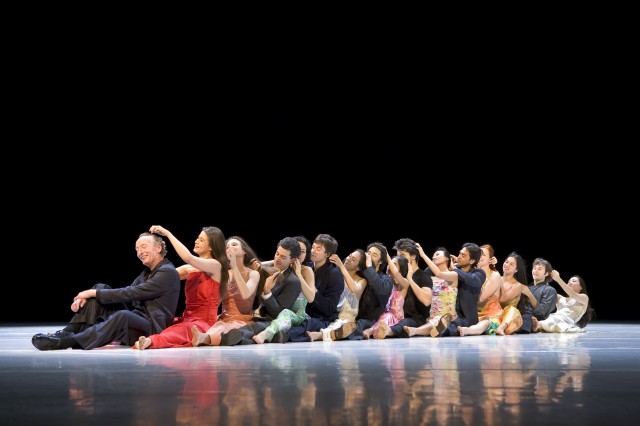
Fans will be lining up at BAM to see Pina Bausch’s final choreographed work October 18-27 (photo by Laurent Philippe)
“ . . . COMO EL MUSGUITO EN LA PIEDRA, AY SI, SI, SI . . .”
BAM Howard Gilman Opera House
30 Lafayette Ave. between Ashland Pl. & St. Felix St.
October 18-27
718-636-4100
www.bam.org
www.pina-bausch.de
For more than thirty-five years, German choreographer Pina Bausch changed the face of dance theater, creating unique, memorable, mind-bending works for her innovative and influential company, Tanztheater Wuppertal. Going from the simple to the sublime, the experimental to the monumental, Bausch staged pieces that combined movement and music with dialogue and humor in thrilling ways. Bausch died in 2009 at the age of sixty-nine, leaving behind a lasting legacy captured in such seminal works as Café Müller, Kontakthof, Danzón, Masurca Fogo, Nefés, and Vollmond (Full Moon) as well as her longtime friend Wim Wenders’s Oscar-nominated 3-D documentary, Pina. From October 18 to 27, the final piece she choreographed, “…como el musguito en la piedra, ay si, si, si…” (Like moss on a stone), will be performed at the company’s exclusive New York home, BAM. There is nothing quite like experiencing a piece by Bausch, who infused her creations with unexpected twists and turns, social commentary and sexuality, and an overriding love of life, in all its forms. This final work was inspired by the folk music and legends of Chile, featuring a cast of sixteen, with set design by the great Peter Pabst and costumes by Marion Cito. It should be a fond farewell to a true legend.
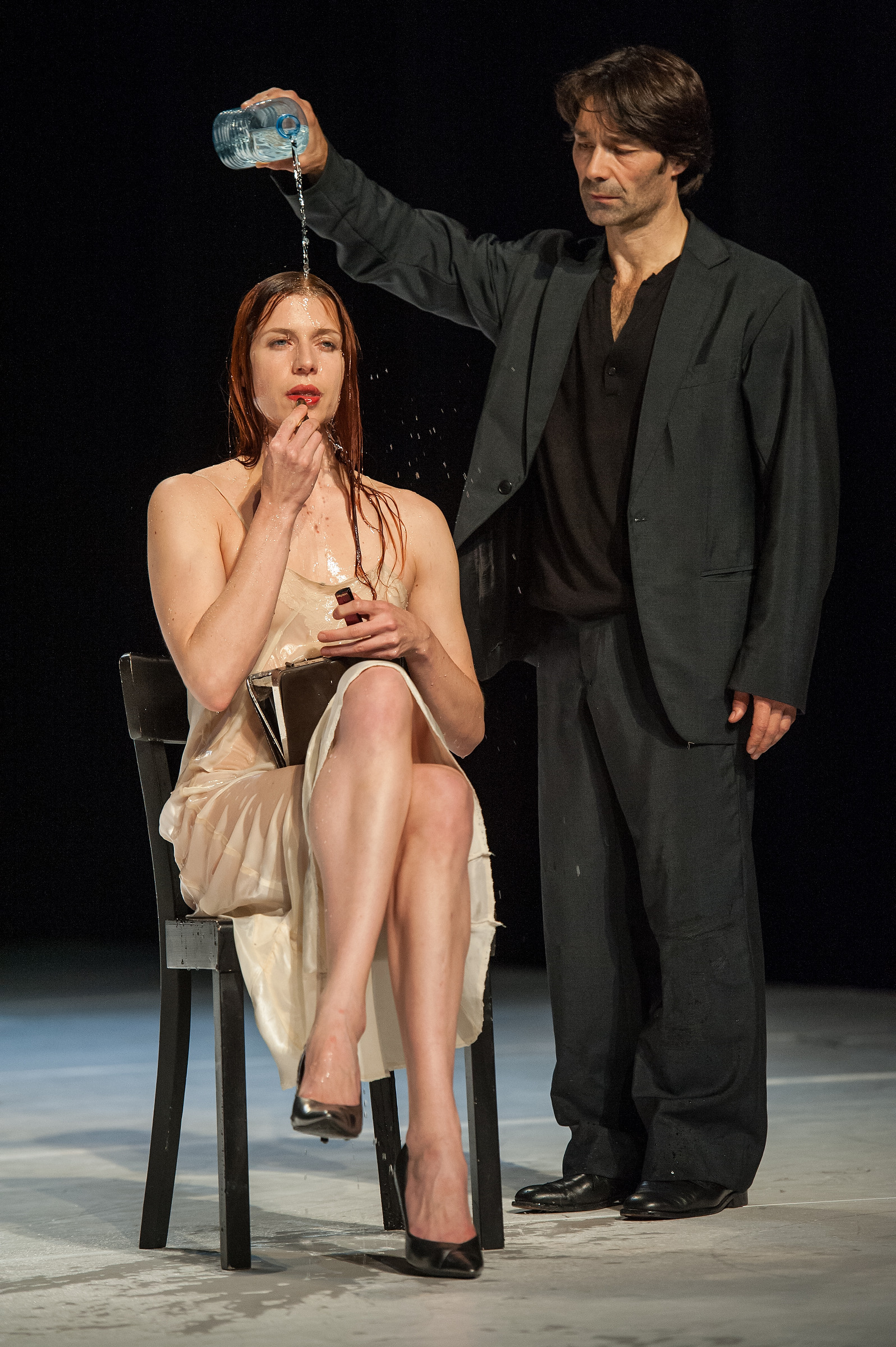
Anna Wehsarg and Rainer Behr share a tender moment in “…COMO EL MUSGUITO…” (photo by Stephanie Berger)
Update: Clouds of both happiness and sadness hung over BAM’s Howard Gilman Opera House as Tanztheater Wuppertal performed the final work choreographed by Pina Bausch, who died in 2009 shortly before “…como el musguito en la piedra, ay si, si, si…” (Like moss on a stone) opened. Part of her international residency series, the evening-length piece was inspired by the company’s visit to Santiago, Chile, and features a wide-ranging score, including songs by Chico Trujillo, Victor Jara, Congreso, Mauricio Vicencio Alquinta, Rodrigo Covacevich, and Mecánica Popular as well as Madeleine Peyroux, Count Basie, and the Cinematic Orchestra. Under the leadership of artistic directors Dominique Mercy and Robert Sturm, who promise to keep the company moving forward, “…como el musguito…” is chock-full of Bausch’s trademark touches, both humorous and romantic, but it focuses more on pure dance than usual, with a large number of solos, duets, and trios taking place within the arc of a narrative that examines the never-ending battle of the sexes. On Peter Pabst’s white overlay that occasionally breaks apart into sections like ice floes, the men, in dark pants and shirts, and the women, in elegant, colorful gowns and long hair, kiss, grope, bark, tell jokes, line up on the floor, and run around in circles. Chairs, poles, water, rocks, potatoes, and trees appear onstage, then disappear in a series of sketches that are reminiscent of Laugh-In, only with much better choreography. One of the many joys of Bausch’s work was its unpredictability, and that is as true as ever with “…como el musguito…,” which offers surprises galore. Tanztheater Wuppertal is part of BAM, part of the Brooklyn family, as this long-sold-out run once again proves. As the performers left the stage, it was hard not to shed tears of joy and sadness, though it should be fascinating to see what the company comes up with next as they face the future without their founder, who changed the face of dance theater forever.
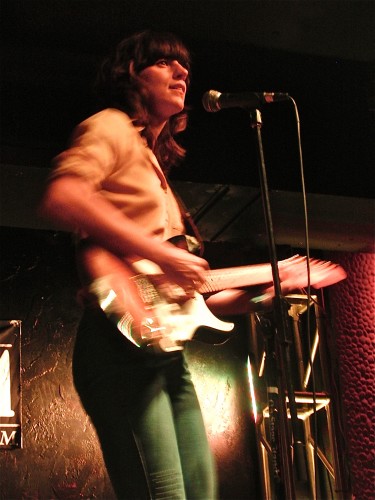
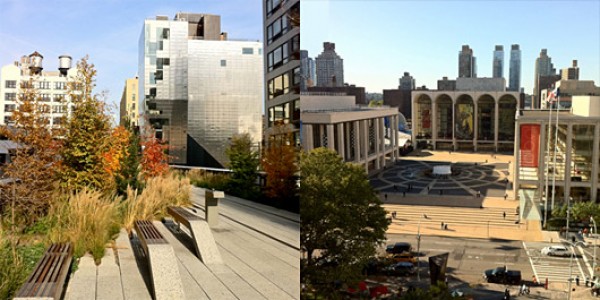

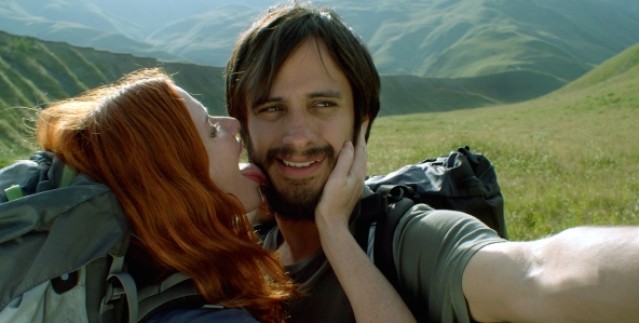
 The first half of Julia Loktev’s second feature film, The Loneliest Planet, is a dazzling tour de force, as young lovers Alex (Gael García Bernal) and Nica (Hani Furstenberg) revel in all that life has to offer. Shortly before getting married, they have decided to go on a hiking trip through the Caucasus Mountains in Georgia, led by a guide named Dato (real-life mountaineer Bidzina Gudjabidze, in his first acting role). Alex and Nica are fresh and alive, their eyes filled with wonder, their faces in perpetual, infectious smiles as they make their way through spectacular landscapes gorgeously photographed by cinematographer Inti Briones. In several shots, the three hikers are barely visible walking in the distance as Briones focuses on breathtaking views of the lush green mountainside and vast Central Asian landscape (as well as, in close-up, Furstenburg’s dazzling red hair). What little dialogue there is doesn’t really matter; in fact, much of it is hard to hear, more like background noise, and what is spoken in foreign languages isn’t even translated. But when the travelers run into three locals, something happens that upends the dynamic and severely changes the relationship among Alex, Nica, and Dato, something that requires the kind of split-second decision that one can never take back, resulting in a return journey that is much darker, the smiles, laughter, and romance disappearing in a stark moment. Based on Tom Bissell’s short story “Expensive Trips Nowhere,” The Loneliest Planet recalls such seminal works as Mikhail Kalatozov’s The Letter Never Sent, Andrei Tarkovsky’s Stalker, John Boorman’s Deliverance, Akira Kurosawa’s Dersu Uzala, and Roberto Rosselini’s Voyage in Italy, in which location serves as a character of mystery and potential danger. Loktev, a visual artist who previously made the 1998 documentary Moment of Impact, which details her family’s very personal experiences after her father was hit by a car, and her 2006 narrative debut, Day Night Day Night, about a female Palestinian suicide bomber, has crafted a mesmerizing tale built around small subtleties and the tender, fragile nature of human relationships, in which one misstep can have shattering consequences. Mexican actor García Bernal and New York-born Israeli star Furstenberg make a terrifically believable couple, so vibrant in the first half, so tentative and subdued in the latter sections. The Loneliest Planet is having a special preview screening on October 17 as part of the Museum of the Moving Image’s “See It Big!” series, with Loktev and Furstenberg on hand to talk about the film, which opens October 26 at the IFC Center.
The first half of Julia Loktev’s second feature film, The Loneliest Planet, is a dazzling tour de force, as young lovers Alex (Gael García Bernal) and Nica (Hani Furstenberg) revel in all that life has to offer. Shortly before getting married, they have decided to go on a hiking trip through the Caucasus Mountains in Georgia, led by a guide named Dato (real-life mountaineer Bidzina Gudjabidze, in his first acting role). Alex and Nica are fresh and alive, their eyes filled with wonder, their faces in perpetual, infectious smiles as they make their way through spectacular landscapes gorgeously photographed by cinematographer Inti Briones. In several shots, the three hikers are barely visible walking in the distance as Briones focuses on breathtaking views of the lush green mountainside and vast Central Asian landscape (as well as, in close-up, Furstenburg’s dazzling red hair). What little dialogue there is doesn’t really matter; in fact, much of it is hard to hear, more like background noise, and what is spoken in foreign languages isn’t even translated. But when the travelers run into three locals, something happens that upends the dynamic and severely changes the relationship among Alex, Nica, and Dato, something that requires the kind of split-second decision that one can never take back, resulting in a return journey that is much darker, the smiles, laughter, and romance disappearing in a stark moment. Based on Tom Bissell’s short story “Expensive Trips Nowhere,” The Loneliest Planet recalls such seminal works as Mikhail Kalatozov’s The Letter Never Sent, Andrei Tarkovsky’s Stalker, John Boorman’s Deliverance, Akira Kurosawa’s Dersu Uzala, and Roberto Rosselini’s Voyage in Italy, in which location serves as a character of mystery and potential danger. Loktev, a visual artist who previously made the 1998 documentary Moment of Impact, which details her family’s very personal experiences after her father was hit by a car, and her 2006 narrative debut, Day Night Day Night, about a female Palestinian suicide bomber, has crafted a mesmerizing tale built around small subtleties and the tender, fragile nature of human relationships, in which one misstep can have shattering consequences. Mexican actor García Bernal and New York-born Israeli star Furstenberg make a terrifically believable couple, so vibrant in the first half, so tentative and subdued in the latter sections. The Loneliest Planet is having a special preview screening on October 17 as part of the Museum of the Moving Image’s “See It Big!” series, with Loktev and Furstenberg on hand to talk about the film, which opens October 26 at the IFC Center.